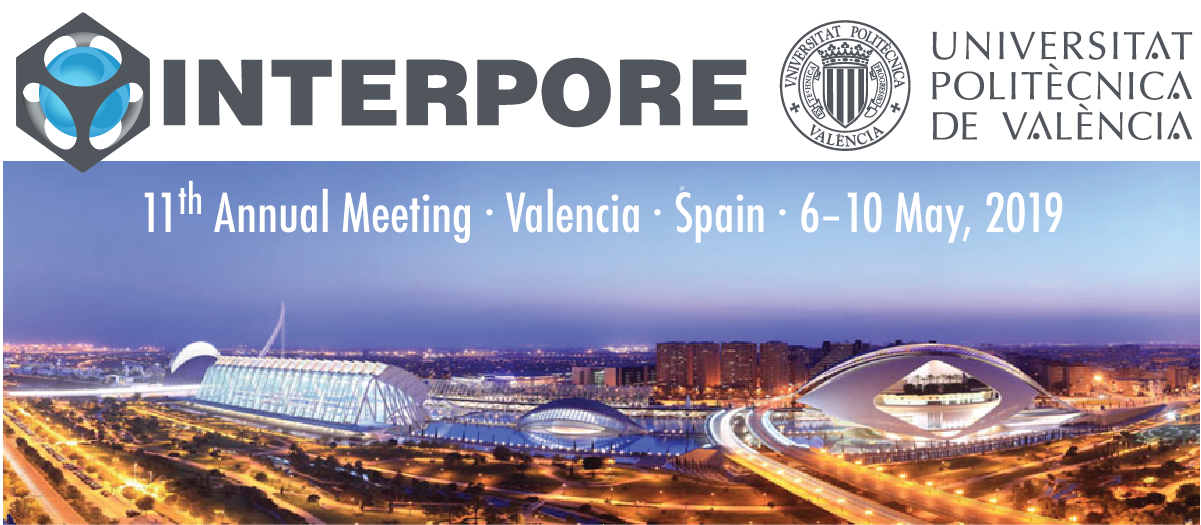Speaker
Description
Current automotive exhaust gas aftertreatment systems consist of catalytic converters for abatement of gaseous pollutants such as CO, hydrocarbons (HC) and nitrogen oxides (NOx), and a filter trapping the particulate matter (PM). So far only cars with Diesel engines have been equipped with the filter (DPF) but the recently introduced EURO 6c particulate number limits enforce the use of particulate filters also with gasoline engines (GPF). Both catalyst and filter have the shape of a cylindrical monolith with a large number of parallel channels in a honeycomb arrangement. However, standard catalytic converters are flow-through while the filter channels are alternately plugged at the inlet or outlet so that the exhaust gas is forced to permeate through the porous wall from one channel to another, filtering out the soot. To make the system more compact, the catalytic material can be deposited directly into the filter as on-wall layer or inside the porous wall. The advantages of catalytic filters are space, weight and cost savings, reduction of overall heat-losses and easier soot combustion in the presence of catalyst. On the other hand, the distribution of catalytic material on or in the porous filter walls has to be carefully optimized to meet the opposing requirements of maximum filtration efficiency, high conversion, and minimum pressure drop.

In this contribution we introduce a newly developed methodology for the pore-scale simulation of gas flow, diffusion, reaction and soot filtration in the coated catalytic filter. 3D morphology of the porous filter wall including the actual distribution of catalytic material is reconstructed from X-ray tomography (XRT) images and further validated with the mercury intrusion porosimetry (MIP). The reconstructed medium is then transformed into simulation mesh for OpenFOAM. Flow through free pores in the substrate as well as through the coated zones is simulated by porousSimpleFoam solver, while an in-house developed solver is used for component diffusion and catalytic reactions. Transport and filtration of soot particles is calculated with Lagrangian model including Brownian motion. Three filter samples with different distribution of alumina-based coating ranging from in-wall to on-wall are examined. Velocity, pressure and component concentration profiles are calculated enabling the prediction of permeability, component conversion and filtration efficiency depending on the actual microstructure of the wall. The simulation results suggest that the gas predominantly flows through remaining free pores in the filter wall and cracks in the coated layer. The mass transport into the coated domains inside the filter wall is enabled mainly by diffusion. Large domains of compact catalytic coating covering complete channel wall result in a significant increase of pressure drop as the local permeability of the coating is two orders of magnitude smaller than that of bare filter wall. The spatially averaged results of pore-scale model are then employed in the entire device model. The predictions are in good agreement with the measured pressure drop, conversion and filtration efficiency. From the studied samples, the most promising structure is the one combining in-wall and partial on-wall coating. The developed models provide useful feedback for further optimization.
References
Kočí P., Isoz M., Plachá M., Arvajová A., Václavík M., Svoboda M., Price E., Novák V., Thompsett D. 3D reconstruction and pore-scale modeling of coated catalytic filters for automotive exhaust gas aftertreatment. Catalysis Today 320 (2019), 165-174. DOI:10.1016/j.cattod.2017.12.025 ;
Václavík M., Plachá M., Kočí P., Svoboda M., Hotchkiss T., Novák V., Thompsett D. Structure characterisation of catalytic particulate filters for automotive exhaust gas aftertreatment. Materials Characterization 134 (2017), 311-318. DOI:10.1016/j.matchar.2017.11.011
| Acceptance of Terms and Conditions | Click here to agree |
|---|






